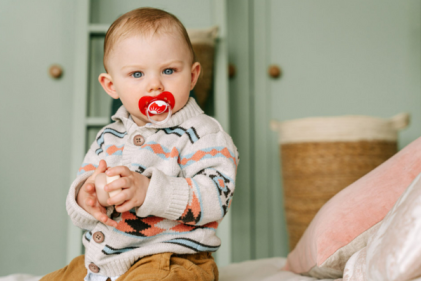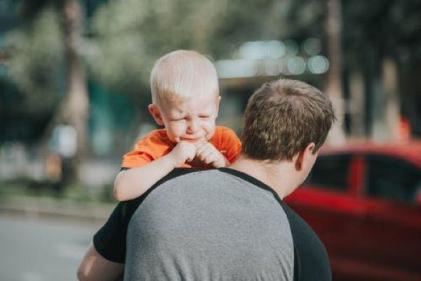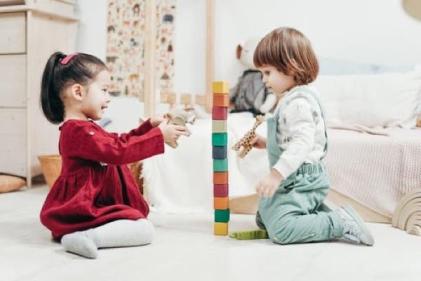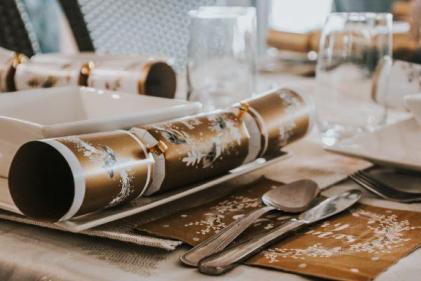Identify potential accidents before your child can make them happen. See what your child can reach and what can be used as a platform to climb to high counters and tables. Be aware that your child can pull down things like table cloths, pots, plates and books that are just within reach. Go through each room and living area of your home and take precautions wherever possible.
The bathroom is a dangerous place for your child. Be sure to use a non-slip mat for your child to stand and sit on in the bath and never leave your child unattended. Even taking your eyes off your child to answer the phone while bathing them can be disastrous. Toddler-proof your bathroom with a lock on the toilet seat, to prevent your child from falling in and drowning.
If your child is sleeping in a bed, either use detachable side rails, or sponge mattresses on the floor, to prevent injury from falling out of bed at night.
Burns from hot liquid and cooking oil can severely injure and scar your child. Do not carry your child and a hot beverage at the same time. Keep hot food and drink out of reach and away from the edge of tables and counters. Do not hold your child while using the stove. Turn all pot and pan handles so that they face towards the back of the stove. Use an appliance latch to keep the oven door closed. Use knob covers and a stove guard, or use the electrical isolation switch to turn off all power to the stove when not in use.
Use caution and discipline when driving with an accompanying child. Always use a properly installed car seat for your child. Observe the manufacturer's safety instructions and drive with the doors locked and windows closed. Lock electric windows from the driver's console and make use of child safety locks for doors.
Do not dress your child in clothing with drawstrings. You can also cut off drawstrings from clothing to make the items safer.
Prevent injury to your child's fingers by using doorstops and door holders.
Electrical socket outlets should all be covered with safety covers, safety plugs, or be made inaccessible by placing heavy furniture strategically. Keep electrical cord hidden under furniture, or use ducting. Appliances such as blow-dryers, toasters and food processors should be unplugged and stored out of your child's reach.
Prevent falls by never leaving your child alone in a high chair. Do not allow your child to climb onto couches or other items of furniture that are high. Make sure your child cannot open windows or sliding doors alone, by using window and door guards. Reinforce windows with child-proof netting or bars, so that your child cannot fall through the glass by leaning against it. If you have bannisters or guard rails on a patio with gaps that are wider than four inches, or 10 centimetres, block the gaps with Plexiglas or plastic garden fencing. When shopping, use a safety belt to keep your child secure in the shopping cart or trolley.
Make your fireplace safe by installing a fireplace grill and using it whenever you make a fire. Buy a grill with a curved top, to prevent objects from being thrown over the grill into the fire. Keep all matches, fire starters and pokers locked away and out of reach. Keep the gas key out of reach if you have a gas fireplace.
Install smoke detectors and carbon monoxide detectors. Check the batteries on all devices monthly.
Discuss and explain the escape routes and emergency procedures with your child.
As a parent, you should at least do a basic first aid course and know CPR procedures.
Preventing access to dangerous areas of the home solves a lot of potential problems. Lock away all knives, heavy pots and dangerous kitchen appliances, or keep them out of reach. Use safety gates, door closers, door locks and knob covers to limit access to forbidden territory. Cupboards and drawers within your child's reach should have locks or safety latches. Keep rubbish bins closed with a child-proof latch, or store refuse bags and bins in a secure location. Use an appliance latch on the refrigerator. Avoid using table cloths and place mats – these can be pulled off a table, along with whatever objects are on them. Keep one cupboard or drawer accessible for your child and fill it safe, lightweight items to play with. This will distract your child from the dangerous items stored in other cupboards.
Remove all unnecessary furniture and clutter around the house. Use corner guards and take note of potential obstructions to your child's movement, including table tops that are just above eye-level. Secure bookcases and shelving that can be pulled down by your child. Televisions should be wall-mounted, or placed against a wall on low, stable cabinets. Place lamps that can tip over, behind furniture to limit access.
Weapons, such as rifles, swords and even self-defence items that don't need a licence, should be securely locked or stored out of your child's reach. Make sure that your child knows that the weapons you own are not toys and should never be touched or played with. In most countries that allow private gun ownership, guns have to be either on the owner, or in a safe at all times. Keep ammunition separate from the firearm, or disable the weapon by removing the firing pin. This pertains to guns that are on display for collectors, rather than home defence. There are many extra safety devices available for all firearms, such as combination trigger locks and wall-mounted rapid-access safety hangers that are lockable and block the barrel, as well as limit trigger access.
If you have a playground at home, or go to a public playground, make sure that the ground surface under the equipment is safe. Rubber mats, wood shavings, sand, fibre, and pea gravel are good surfaces, while concrete, tar and grass are not.
Move all detergents, household cleaners, medicines and other potentially dangerous substances to lockable cupboards, or store them out of reach. When visitors come to your house, make sure their belongings are kept out of reach, since prescription drugs or medicines can be kept in jacket pockets or handbags. Make sure that your house has no poisonous plants in pots. Keep phone numbers handy for emergency response to poisoning.
Keep your child out of direct sunlight and use sunscreen and hats outdoors. Your child only needs 10 to 20 minutes of direct sunlight per day for health reasons.
Make sure your child's toys are safe. This means that they are manufactured properly and have no parts that can be pulled or broken off easily. Toys should not be too heavy or big - this prevents your child from getting hurt or suffocating under a toy. There should be no long cords or strings attached to toys and they must not be able to hang around your child's neck. Use the labels on the packaging as a guide to ensure that toys are appropriate to your child's age and skill level.
Teach your child to be cautious when near streets, parking lots and roads and that an adult must always be present and holding their hand.
If you own a swimming pool, either install a child-safety net for the pool surface, or put up a fence that has a self-closing, latched gate. Keep the gate locked. Never leave children unattended or unsupervised in or around a pool, pond or other body of water. Any buckets or basins within your child's reach, must not have liquid in them.
Windows need to be child-proofed. Mark glass doors with bright, colourful stickers, so that your child knows when they are closed. Use locks to limit the opening distance of windows. Screens should not be relied on to prevent access to windows and glass panes. Move furniture away from windows, to prevent your child from climbing up for access. Remove or tie up cords for blinds and drapes.







